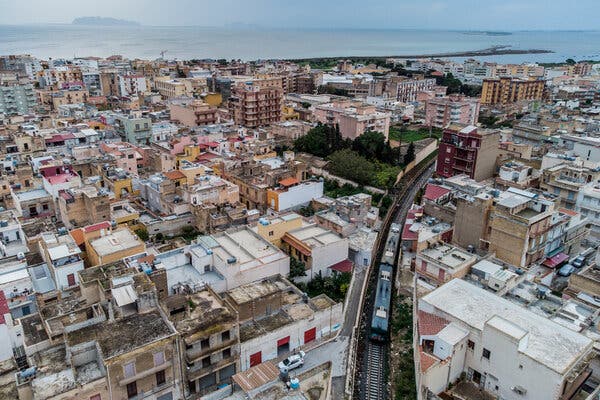Circling Sicily on Its Regional Trains (Published 2022)
2 min readI was pacing impatiently in my hotel room on the Via Etnea, one of the main boulevards in the center of Catania. Looking out from my balcony, I wondered if the rain was ever going to stop. I’d arrived here on the eastern coast of Sicily earlier in the day, planning to complete a 2.5-week trip to document the Italian island’s culture of regional train travel, but the weather didn’t look promising.

The idea for the project had come to me several months earlier when, on a holiday with my partner, I’d traveled by train on the slopes around Sicily’s famous — and famously active — volcano, Mount Etna.
As stunning as the views from the windows were, I was at least as intrigued by the seemingly outdated diesel train, quaint and romantic, that shuttled us past lava fields and olive groves. I decided to come back for a photo essay.
On Trenitalia’s website, I narrowed in on the three routes where commuters were dependent on the old-fashioned trains that I was interested in: the Ferrovia Circumetnea, a narrow-gauge train that connects the villages around Mount Etna; the Syracuse-Gela-Canicattì line, which traces Sicily’s southeastern coast; and a route near the western tip of Sicily that links the village of Piraineto and the city of Trapani, via the town of Castelvetrano.
I’d imagined a trip where I’d hop on and off the regional trains, visiting rural villages with beautiful Italian names and experiencing the charm of regional train travel at this southern edge of Europe. I also hoped to capture portraits of the people I encountered — daily commuters and train operators — who populated this corner of southern Italy, which is poorer and less developed than the country’s comparatively wealthier north.



